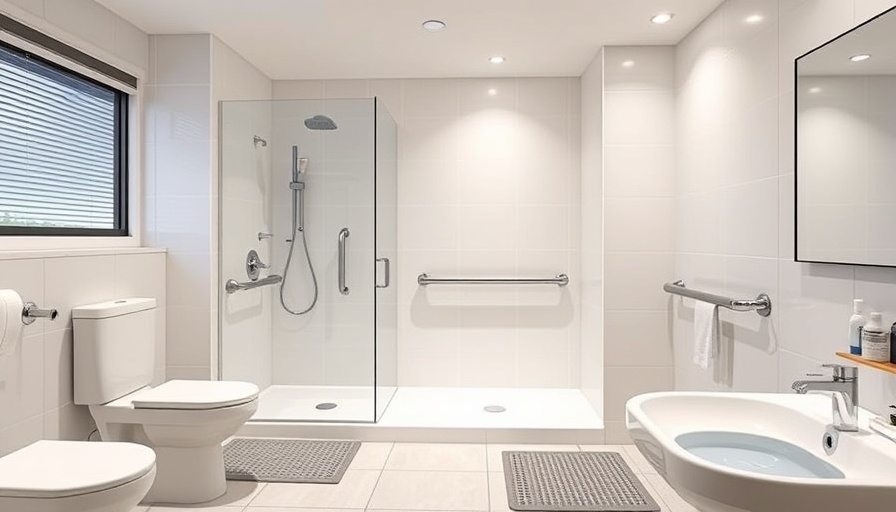
Ensuring Safety for Seniors: Essential Bathroom Assistance Practices
As aging populations experience declining mobility, the bathroom emerges as a critical area of concern for caregivers. Awareness of the risks and effective practices can empower families and caregivers to ensure safety while maintaining dignity for their elderly loved ones. Here’s how to navigate bathroom assistance for seniors effectively.
Understanding the Unique Challenges of Senior Bathroom Use
The bathroom can become a significantly hazardous environment for seniors due to physical limitations and health conditions such as arthritis, dizziness, and cognitive decline. Recognizing these challenges is essential for caregivers aiming to provide effective and respectful assistance.
Moreover, the emotional aspect of needing help in such a private space can be overwhelming for those who value their independence. As caregivers, it’s vital to approach the situation with empathy, ensuring seniors feel respected and understood.
Key Strategies for Preventing Falls in the Bathroom
Preventing falls is paramount in enhancing bathroom safety. A crucial step is to eliminate hazards by keeping surfaces clutter-free and organized. This not only simplifies navigation for seniors but also significantly reduces the risk of slipping or tripping.
Installing grab bars next to toilets and inside showers or tubs can provide seniors with necessary support when standing up or sitting down. It’s critical that these bars are securely anchored and correctly positioned to ensure they are accessible and useful.
Creating an Accessible and Senior-Friendly Bathroom Environment
Accessibility features in a bathroom significantly enhance seniors' safety. A walk-in shower minimizes the risk associated with stepping in and out of bathtubs. For those who cannot install a walk-in shower, using a shower chair can provide stability.
Non-slip mats or adhesive strips in showers are vital additions; they offer extra traction and peace of mind during bathing, reassuring both seniors and their caregivers.
Utilizing Assistive Devices for Enhanced Safety
Several assistive devices can make a remarkable difference in bathroom safety. For instance, raised toilet seats can facilitate easier transitions for seniors with joint problems or disabilities, reducing strain during use.
A shower commode chair provides versatility, functioning as a safe seating option in the shower while also acting as a portable toilet. These devices not only contribute to safety but also promote greater autonomy for seniors.
Fostering Emotional Support Through Effective Communication
Assistance in the bathroom transcends physical aid; emotional support plays an equally vital role. Caregivers should establish open lines of communication, allowing seniors to voice their concerns or fears regarding bathroom safety. This dialogue fosters trust and empowers seniors to feel more secure in receiving help.
Building a supportive atmosphere encourages seniors to share their needs and preferences, leading to better outcomes during assistance.
Risk Factors and Solutions: What Every Caregiver Should Know
It’s essential for caregivers to identify potential risks in the bathroom. Some common hazards include slippery surfaces and inadequate lighting. By addressing these elements, caregivers can create a safer environment. Installing brighter bulbs or night lights can significantly enhance visibility, reducing the likelihood of accidents.
Additionally, caregivers should monitor seniors’ medication use, as certain medications may affect balance or alertness, increasing fall risks. Regular assessments to adapt safety measures to evolving needs are key in maintaining a secure living environment.
Real-Life Success Stories: Transforming Bathrooms for Senior Safety
Many families have successfully adapted their bathrooms to enhance safety for their elderly members. Stories abound of caregivers who installed grab bars and non-slip mats, resulting in marked decreases in minor injuries and improved convenience for seniors. These transformations not only ensure safety but also preserve the dignity of seniors during their most private moments.
Conclusion: The Value of Knowledge in Caregiving
For caregivers, understanding the nuanced needs of seniors in the bathroom is essential for ensuring safety without compromising dignity. Equipped with effective strategies, caregivers can navigate the challenges of providing assistance confidently.
Implementing best practices for bathroom safety not only enhances the physical environment but emotionally supports both caregivers and seniors alike. Dive deeper into your role as a caregiver and explore additional resources to empower your efforts. Knowledge is power.
To learn more about advanced safety measures for seniors and effective caregiving strategies, consider accessing dedicated Caregiver Resources that delve into these topics in greater detail.
 Add Row
Add Row  Add
Add 




Write A Comment